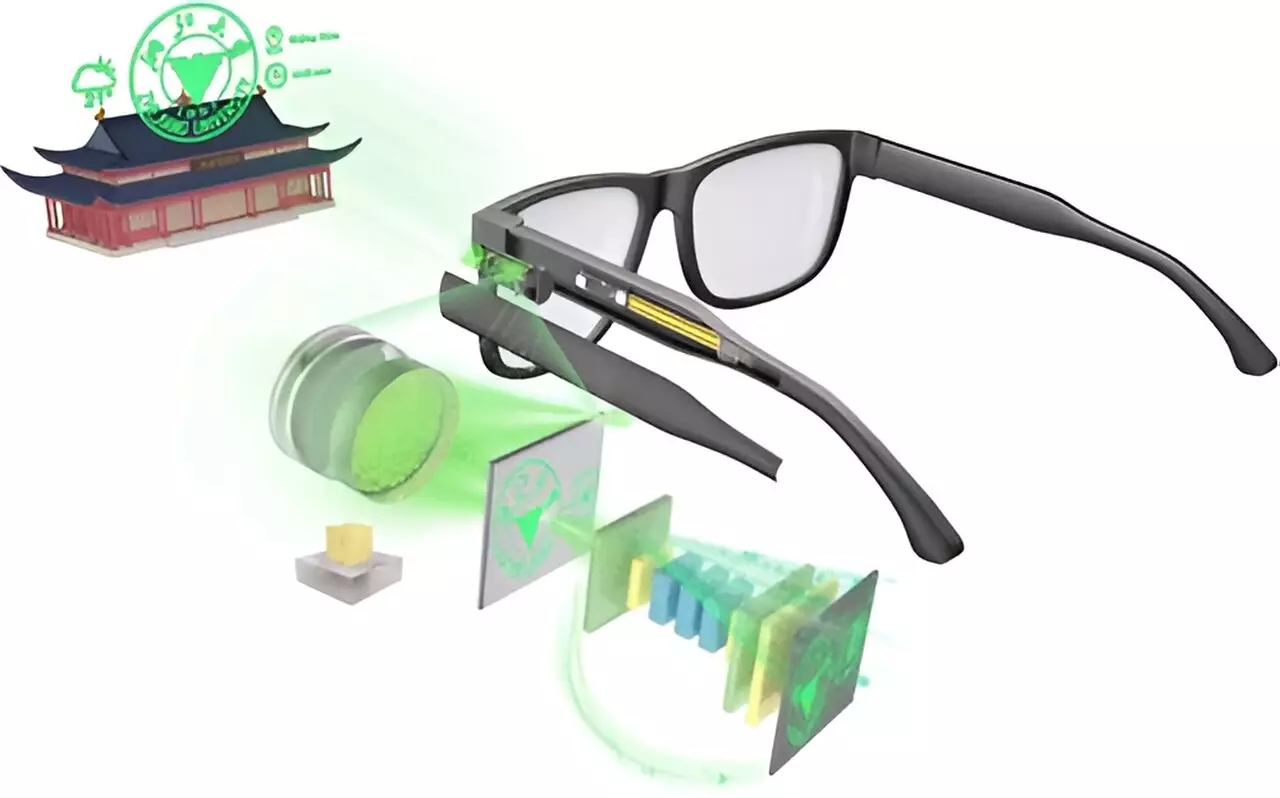Augmented reality (AR) is set to redefine our interaction with the digital world by fusing digital images seamlessly with our real-world environments. While most people associate AR primarily with entertainment, such as video games and mobile applications, its implications extend far beyond leisure. The potential applications of AR in critical fields like surgery and autonomous vehicles highlight a pressing need for more efficient and effective AR display systems. Recent advancements in optical technologies may pave the way for these transformative applications, making AR a cornerstone of future innovations.
Researchers have been exploring ways to streamline and enhance AR displays by integrating multiple optical methods into a singular, high-resolution system. Youguang Ma and his team have undertaken this challenge, developing a prototype pair of eyeglasses that showcases how two distinct optical technologies—a metasurface and a refractive lens—can converge to create a compact yet powerful AR display. This integration represents a significant breakthrough, as traditional AR systems often rely on bulky setups with multiple lenses that compromise portability and usability.
The innovative design comprises a lightweight silicon nitride metasurface, meticulously etched with a specific pattern. This pattern is crucial as it directs and focuses light emitted by a microLED array, which consists of numerous green LEDs. The visual output is refined through a synthetic polymer refractive lens that sharpens the image, correcting various optical aberrations. The result is an AR display that can sit comfortably on the nose bridge of eyeglasses, eliminating the cumbersome nature often associated with AR equipment.
One of the most significant challenges in AR technology is maintaining image clarity while minimizing distortion. Many existing AR systems suffer from reduced quality when transitioning to smaller form factors. However, the team led by Ma has reported astonishing results: their eyeglass prototype managed to maintain an impressive level of image fidelity with less than 2% distortion across a 30-degree field of view. This achievement is particularly noteworthy compared to conventional four-lens AR systems, which often cannot match this degree of compact efficiency.
To further enhance the clarity of displayed images, the researchers implemented advanced computer algorithms designed to rectify minor imperfections within the optical system. Such precision means that even complex visuals, like a reprojected image of a red panda, can show structural similarities to the original reference image that surpass traditional methods—74.3% accuracy compared to 70.3% without this preprocessing step.
While the current prototype successfully demonstrates the potential of hybrid AR displays, further development is crucial. Researchers foresee extending the color capabilities from green to a full spectrum of colors, thereby increasing the prototype’s practicality for everyday use. With these advancements, the dream of mainstream AR glasses becomes increasingly attainable, promising to revolutionize how we navigate both our digital and physical worlds. The implications for fields such as education, training, and entertainment are staggering, transforming how we perceive and interact with our environments. As research progresses, we may soon find AR technologies not just in specialized applications but woven into the fabric of daily life.

